- Home
- Jason Webster
Guerra
Guerra Read online
¡GUERRA!
Living in the Shadows of the
Spanish Civil War
JASON WEBSTER
This eBook is copyright material and must not be copied, reproduced, transferred, distributed, leased, licensed or publicly performed or used in any way except as specifically permitted in writing by the publishers, as allowed under the terms and conditions under which it was purchased or as strictly permitted by applicable copyright law. Any unauthorised distribution or use of this text may be a direct infringement of the author’s and publisher’s rights and those responsible may be liable in law accordingly.
Version 1.0
Epub ISBN 9781407094885
www.randomhouse.co.uk
TRANSWORLD PUBLISHERS
61–63 Uxbridge Road, London W5 5SA
a division of The Random House Group Ltd
RANDOM HOUSE AUSTRALIA (PTY) LTD
20 Alfred Street, Milsons Point, Sydney,
New South Wales 2061, Australia
RANDOM HOUSE NEW ZEALAND LTD
18 Poland Road, Glenfield, Auckland 10, New Zealand
RANDOM HOUSE SOUTH AFRICA (PTY) LTD
Isle of Houghton, Corner of Boundary and Carse O’Gowrie Roads,
Houghton 2198, South Africa
Published 2006 by Doubleday
a division of Transworld Publishers
Copyright © Jason Webster 2006
Map copyright © Neil Gower 2006
The right of Jason Webster to be identified as the author of this work has been asserted in accordance with sections 77 and 78 of the Copyright, Designs and Patents Act 1988.
A catalogue record for this book is available from the British Library. ISBNs (cased) 9780385608541 (from Jan ‘07) 0385608543 (tpb) 9780385608589 (from Jan ‘07) 0385608586
All rights reserved. No part of this publication may be reproduced, stored in a retrieval system, or transmitted in any form or by any means, electronic, mechanical, photocopying, recording or otherwise, without the prior permission of the publishers.
Typeset in 11.5/14pt Bulmer by Falcon Oast Graphic Art Ltd.
Printed in Great Britain by Clays Ltd, Bungay, Suffolk
1 3 5 7 9 10 8 6 4 2
Papers used by Transworld Publishers are natural, recyclable products made from wood grown in sustainable forests. The manufacturing processes conform to the environmental regulations of the country of origin.
Contents
Cover
Title
Copyright
Dedication
About the Author
By the same author
Note
Acknowledgements
Map
1 The Pit
2 Prelude
3 Anything Goes
4 The Flying Dragon
5 Ceuta
6 Mountain Tears
7 Víznar
8 Propaganda
9 Castuera
10 The Siege
11 Burgos
12 Unamuno and Millán Astray
13 Saragossa
14 Death of an Anarchist
15 Kiki and Moa
16 Guernica
17 Valley of the Dead
18 Orwell and the Civil War within the Civil War
19 Badajoz
20 The End
21 Perpignan
Epilogue
Chronology of the Spanish Civil War
Key Figures from the War
Recommended Reading
Notes
Index
For Mum and Dad
Jason Webster is the author of the critically acclaimed Duende and Andalus. He lives in a farmhouse in the mountains just north of Valencia, Spain. His great-grandfather was a gun-runner in the Spanish Civil War.
By the same author
Duende: A Journey in Search of Flamenco
Andalus: Unlocking the Secrets of Moorish Spain
The Spanish Civil War … came from the scarcity of water and excess of fire in the Spanish temperament. When the ardent sun of Spain dries up the land … the parched earth splits open. The well-meaning foreigner, set ablaze himself by Spanish passions, says, ‘This earth here on the right …’ or else ‘This earth here on the left is responsible.’
But there is but one earth.
Salvador de Madariaga
Note
The Civil War is still a sensitive subject in Spain. Some of the people mentioned in this book have asked for their names to be changed so that their privacy may be respected.
Acknowledgements
The following people have been of enormous help during the research and writing of this book and it gives me great pleasure to be able to thank them here: Francisco Sánchez Montoya, Dr Miguel Botella, Manolo Martínez, Paco González, Ángel Olmedo, Diego Peral, Antonio Moya, Sargento Primero Rosado, Abdelkrim Bentato, David Smith, Rafael Paniagua Sánchez, Jim Carmody, Anthony Ham, Toby Follett, Cordula Reinhart, Paul Sapin, José ‘El Taponero’, Emilio Silva, Peter Carroll, Mary Dowley, Marlene Sidaway, Christopher Ross, Paul Preston, Gerald Blaney, Clive Maltby, Michael Alpert, Vicente Botella and Mike Ivey.
La Asociación para la Recuperación de la Memoria Histórica, el Instituto Cervantes de Tetuán, el Cuartel de Regulares No. 3 de Ceuta, and the International Brigade Memorial Trust were all generous in their assistance. Sadly, the Fundación Francisco Franco failed to cooperate or respond in any way, despite my approaches.
Thanks also to Natasha, for her invaluable contribution; to Sarah, for another exceptional effort; and to Salud – sin tí, ya sabes, nada de esto hubiese sido posible.
1
The Pit
Begoña stood at the entrance to the house, leaning on her staff as her little mongrel, Rosco, panted nervously at her feet. A straw hat was tied under her chin with a dark-blue scarf, partly shading a worn, landscaped face, and eyes that shone like cinnamon stones from within layers of protecting skin.
‘One of the goats has fallen down a hole.’
Normally her husband brought the herd up here to graze, but today she had taken his place. ‘Hugo’s in the city,’ she said by way of explanation. ‘Doctor’s appointment.’
I grabbed some rope and a knife and stepped out for her to show me the way. The code up here in the mountains was never to ask for help, simply to explain a problem, and people would naturally respond. In their turn they would receive a minimum of thanks – assisting one another was how the community in this sparsely populated landscape survived. Favours were repaid with favours.
‘Where is it?’
I followed in her footsteps as we passed through fields of dry grass and sprouting blue peach-leaved bellflowers. Spring was almost over but the pale almond blossom on the slopes below us still glistened in the sunlight. Small and compact, Begoña skipped over the stones and rocks that pushed out of the thin dry soil, her cloth bag with her water-bottle and food to last the day swinging across her lower back above a wide rump. She and Hugo had both been born up here, in farmhouses across the valley that were now abandoned like the rest of them. I sometimes wondered how long ago that had been: still active, she had an outdoor face that could belong to anyone over fifty.
Begoña had always been more open and keen to chat than Hugo. You had the sense that her husband was happier with his goats, singing in solitude as the herd scattered a trail of droppings and kicked up stones wherever they trotted. Begoña, on the few occasions when she had come up to the farm, had always stopped by to say hello, accepting my offers of red wine from dusty tumblers and telling me stories of life in the valley from when she was a little girl. There used to be more rain here, before the weather started changing. Snow up to your knees every winter. Now you were lucky to get any at all. Used to be a big grape-growing area, but the farmers had switched some years back
to olives and almonds, which could cope better with the drier conditions.
Her animals would mill around her, munching their way through everything in my budding garden, Rosco growling them back into place if they strayed too near the fig trees, while she talked on regardless, lapping up the opportunity for conversation as though quenching a great thirst.
‘You need some tomatoes here. They like this soil. My uncle used to grow them up over the other side of the mountain, next to his tobacco plantations. Before everyone left and moved to the towns, that is …’
I loved the remoteness of this area – the mountains of Castellón: it was one of the reasons why Salud and I had looked for a house here in the first place. I’d been living in Spain for some twelve years now, mostly in the city, but the landscape surrounding us here tapped into an enduring vision I had of my adopted homeland: the silence, the spectacular mountain views, the scent of pine forests; often we caught sight of eagles soaring in the sky overhead, brightly coloured butterflies would flutter around our feet, while Spanish ibex, their horns like lyres, would sometimes come to drink at sunset in our little spring on the other side of the hill. Yet for Begoña the silence was a source of sadness. These had all been bustling farms once; now Salud and I were the only ones living so far up the valley, slowly renovating a small group of ancient stone cottages – a mas – that hadn’t been lived in for decades.
The area was rich in history: the Maestrat had once been the battle ground of El Cid, later a domain of the Templars and Hospitallers, presented to the knights as a gift by King James I the Conqueror after winning it from the Moors. Cathar refugees had settled here after being persecuted and all but exterminated in southern France by the early fourteenth century. It was said there were still heretical motifs on the churches from those times, mysterious symbols as little understood as the palaeolithic wall paintings depicting strange fertility dances that decorated some of the caves nearby. This had been the heartland of the ancient Iberians, the ‘swarthy-skinned and curly-haired men’ described by Tacitus, a warrior people who worshipped doves and a sea goddess, and who cremated their dead before burying their ashes in urns.
We walked on over the fields, scampering down the banks of terraces where the old dry-stone walls had crumbled away through lack of care. Even now, there were no telephone wires or electricity pylons to be seen: no signals or reminders of modern, mechanized man.
‘Before my mother was born,’ was all Begoña would say when I asked if she knew when all these terraces had been built. Their imprint was visible on almost all the faces of the surrounding hills and mountains, but many were thickly overgrown. I’d resisted asking when her mother had been born. It wouldn’t have shed much light on the matter anyway. How long before her mother was born? They could have been there for hundreds of years.
The goats bleated and groaned as we covered territory they had already crossed that day. They had eaten the best of the grass already and were now being presented with their own leftovers. Still, they munched on, managing somehow to eat and walk at the same time. Every so often the dog gave a threatening growl.
After a half-hour stroll we passed a ruined old house that stood further down the slope, and turned sharply off the path to descend through gorse and pines sheltering in the shadows of the tallest peak in the valley. The sheer cliff face was a mosaic of orange and pink rock, curling round like the inside of a barrel.
‘Rosco!’ The dog was ordered to keep the animals at bay as we pushed downwards.
‘I don’t usually bring them here,’ Begoña explained. ‘But there’s been so little rain this year.’ She pushed the branches and bushes out of her way with her wooden staff as she followed a path on the hillside I could barely make out.
Halfway down the slope, in the shade of a cluster of holm oaks, was a hole: an irregularly shaped fault in the ground with a fifteen-foot drop to the bottom. Gorse bushes smothered the rim, so that it was almost impossible to see it until we were nearly falling into it ourselves. At the sound of our voices, the fallen goat started bleating.
‘Come round this side,’ Begoña said. ‘There are a few foot-holds.’
She pushed the bushes back as I edged to the side and looked down. The small brown goat was standing on an outcrop of rock near the bottom, bellowing now it could see us, pleading for help. Judging by the way it was standing, it seemed to have broken something.
I climbed down, trying not to fall or push any loose rock down on to the already frightened animal. It didn’t look too difficult. Once I reached the goat, it should be just a matter of tying the rope around its body and hauling it back up.
The creature gave a start as I skipped down the last few feet to reach it, but it seemed to understand that I was there to help, staring up into my face and bleating plaintively as I stroked its head. Begoña threw the rope down to me, keeping hold of one end while I wrapped the other underneath its belly several times and through its legs, following her instructions as to how best to support the animal’s weight. I fumbled with the rope until it felt reasonably secure, finishing off with a reef knot. It was the only knot I could remember, but it seemed to do the trick.
Getting out of the hole proved more difficult than getting in, as the flaky limestone rock easily gave way under my weight, but after a couple of attempts, holding on to clumps of wiry grass growing out of the sides, I was back with Begoña at the top.
‘Bien,’ she said. Wrapping the loose end of the rope around her waist, she started to heave the animal up, her strong arms tensing with the strain. Down in the hole the bleats turned to screams as the goat took off from the ground and immediately crashed into the side. It kicked out at the rock with its knees, unable, it seemed, to straighten its legs and fend off with its hooves. It was already damaged enough, I thought. If we weren’t careful we were going to hurt it even more in trying to save it. Crouching down on the ground, I tried to lift the rope as far as possible from the side of the hole, hoping to spare the animal too many bruises during its ascent. I would have taken the rope myself but Begoña barely paused for breath as she hauled the beast up, her powerful squat body twisting like a spring as, inch by inch, the goat rose towards us.
With a couple more tugs the animal was within my grasp. Grabbing it by the upper part of its front legs I lifted it the final two feet, pushing it in Begoña’s direction for her to take a look. One leg was clearly broken: the goat was hopping around bleating frantically, obviously in some pain. We’d probably have to carry it all the way home. The leg would take time to heal – a few weeks at least.
I bent down to brush the dirt from my legs and glanced into the hole again. It was a long way down. No wonder the poor thing was in such a state.
As I was caught by the sense of falling into this empty void, the bleating behind me stopped. I looked over to where Begoña was attending to the animal, wondering how she had managed to silence it so suddenly. She was wiping her hands on her hips. The goat lay limp on the ground like a rag doll, its eyes half closed, tongue poking out between the teeth of its open mouth.
‘You’ve killed it?’ I asked, trying to check a note of incredulity in my voice.
‘We lost one last year as well,’ she said. ‘Can’t take your eye off them for a second.’
She bent down and with a short swinging motion lifted the dead beast up on to her shoulders, holding it on either side by its legs. Back up the hill Rosco gave a bark, sensing that his mistress was about to return.
I watched for a moment as she pushed her way back up the slope, flicking the bushes aside with her staff to get through as she had done before. On her back the goat’s head flopped like a heavy shopping bag: lifeless, motionless meat. There was no blood; she must have broken its neck while my back was turned. Swift and efficient. I felt dizzy.
Eventually I started up the hill after her, fighting feelings of sentimentality about the fate of the animal. Goats were just goats, I reminded myself. If someone offered me goat stew that evening for dinner I would ha
ppily eat it. This was just one goat more. And Begoña, who’d been a goatherd all her life, knew how best to deal with them. They weren’t pets: they were her livelihood. A goat with a broken leg was a liability.
Yes, I thought, but even still.
As this conflict churned inside me, I only half registered that we were not going back up the way we had come. Rather than cutting across the almond orchards, we had walked further down the valley, and round to an area at the side of the mountain I had never been to before. The area was thick with dark-green Austrian pines, their trunks bent out of the sloping ground like the necks of flamingos. Dragonflies fluttered from stone to stone under squat dusty oaks, the shine from whose thick stunted leaves was already baked dry in the heat.
The sweat quickly evaporated from my forehead in the mountain air, and I felt the back of my throat begin to itch. I wondered why Begoña had decided to go back this way. She pushed on, a tanned paw-like hand held out in front of her with a bent finger pointing ahead.
We came out from under the shade of the trees on to an open stretch of land facing east. In the distance a few fields were still being cared for, with rows of almond trees bursting through ploughed pink soil. But mostly this area had been abandoned.
‘You might want to see this,’ Begoña said simply. I looked around – beneath the wild grass there were odd dents in the earth, unnatural creases snaking for a hundred yards or more in the direction of the sun. Away to the left I could make out a dark pit, partially obscured by gorse bushes.
‘This is where the bodies are buried,’ she said.
For a moment I thought she meant a place where they dumped the bodies of goats like the one slung over her shoulders. But something in her expression made me wonder.
‘What bodies?’
The massacre had taken place here in the mountains in the early summer of 1938. In the USA and Britain audiences were flocking to see Errol Flynn at the cinema in The Adventures of Robin Hood, Germany had just absorbed Austria in the Anschluss, the first Superman comics had recently been published, and oil had been discovered for the first time in Saudi Arabia. But Spain at that point was caught up in a vicious and bloody civil war that would cost at least half a million lives, force a similar number into exile, and see the eventual victory and establishment of one of the twentieth century’s most enduring dictators, General Francisco Franco, an austere and ruthless Catholic soldier from the northwest of Spain. A second world war, as many already sensed, was just around the corner, but in the meantime a bloody dress rehearsal was under way on Spanish soil as the Soviet Union, Germany and Italy carried out a proxy war in preparation for the real thing.

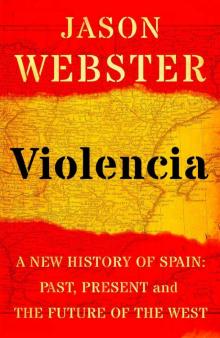 Violencia
Violencia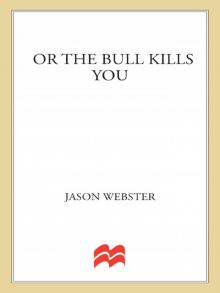 Or the Bull Kills You
Or the Bull Kills You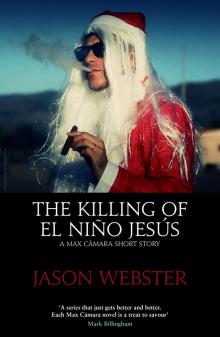 The Killing of El Niño Jesús
The Killing of El Niño Jesús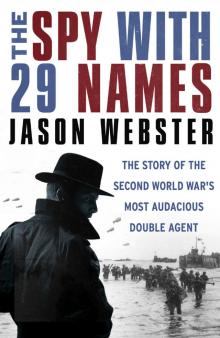 The Spy with 29 Names
The Spy with 29 Names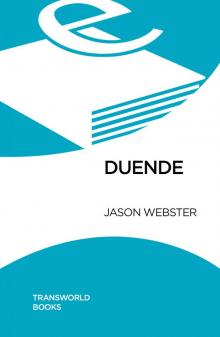 Duende
Duende Guerra
Guerra Sacred Sierra
Sacred Sierra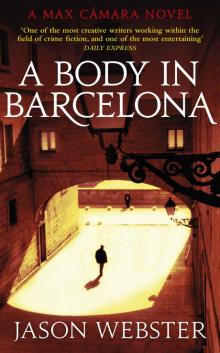 A Body in Barcelona: Max Cámara 5
A Body in Barcelona: Max Cámara 5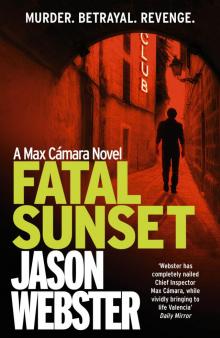 Fatal Sunset
Fatal Sunset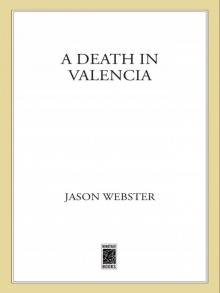 A Death in Valencia
A Death in Valencia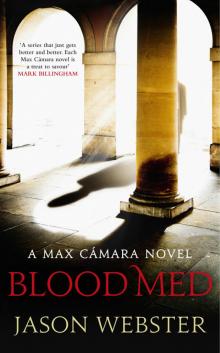 Blood Med
Blood Med Andalus
Andalus